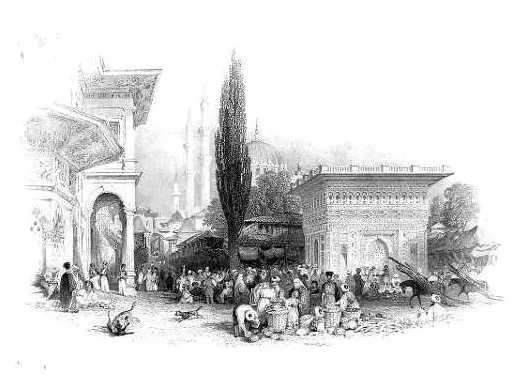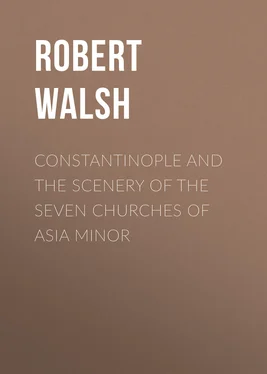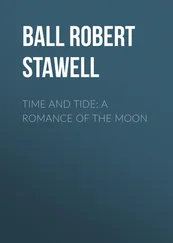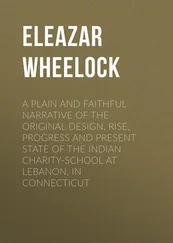Robert Walsh - Constantinople and the Scenery of the Seven Churches of Asia Minor
Здесь есть возможность читать онлайн «Robert Walsh - Constantinople and the Scenery of the Seven Churches of Asia Minor» — ознакомительный отрывок электронной книги совершенно бесплатно, а после прочтения отрывка купить полную версию. В некоторых случаях можно слушать аудио, скачать через торрент в формате fb2 и присутствует краткое содержание. Жанр: foreign_prose, foreign_home, История, foreign_antique, на английском языке. Описание произведения, (предисловие) а так же отзывы посетителей доступны на портале библиотеки ЛибКат.
- Название:Constantinople and the Scenery of the Seven Churches of Asia Minor
- Автор:
- Жанр:
- Год:неизвестен
- ISBN:нет данных
- Рейтинг книги:5 / 5. Голосов: 1
-
Избранное:Добавить в избранное
- Отзывы:
-
Ваша оценка:
- 100
- 1
- 2
- 3
- 4
- 5
Constantinople and the Scenery of the Seven Churches of Asia Minor: краткое содержание, описание и аннотация
Предлагаем к чтению аннотацию, описание, краткое содержание или предисловие (зависит от того, что написал сам автор книги «Constantinople and the Scenery of the Seven Churches of Asia Minor»). Если вы не нашли необходимую информацию о книге — напишите в комментариях, мы постараемся отыскать её.
Constantinople and the Scenery of the Seven Churches of Asia Minor — читать онлайн ознакомительный отрывок
Ниже представлен текст книги, разбитый по страницам. Система сохранения места последней прочитанной страницы, позволяет с удобством читать онлайн бесплатно книгу «Constantinople and the Scenery of the Seven Churches of Asia Minor», без необходимости каждый раз заново искать на чём Вы остановились. Поставьте закладку, и сможете в любой момент перейти на страницу, на которой закончили чтение.
Интервал:
Закладка:
A singular circumstance connected with the first introduction of steam-boats was the subject of universal conversation. An immense crowd had collected, as well to see the sultan, as the vessel in which he had embarked. When he stood upon the deck, a broad flag was displayed floating over his head, with the sun, the emblem of the Turkish empire, embroidered on it; but within the disc was worked a cross; and the pious Moslems saw, with fear and astonishment, their sultan sail under this Christian emblem. He had just before shown such indulgence and good-will to the rayas of that faith, that his enemies every where gave out, that, among his innovations, he was disposed to adopt it himself, and the present flag was a public display of it. It appeared, afterwards, that the unconscious sultan knew nothing of the emblem over his head. The sanguine Greeks of the arsenal had that morning inserted it in the midst of the sun; and so had exhibited it as another cross of Constantine, converting an infidel sovereign to Christianity.
Entering the harbour are always seen large rafts of timber, cut in the woods of the Black Sea, and conveyed down the Bosphorus. These floating islands are of considerable size, and navigated by companies of boatmen. They supply not only the wood for the arsenals, but the firing for the city. Some years ago, a coal-mine was discovered at Domosderé, not far from the mouth of the strait, and several tons of coal were bought and used by the Franks of Constantinople. But the Turks conceived a prejudice against its smoke, and refused to introduce any more; so it fell into disuse. The present sultan will not suffer this important acquisition to his steam-boats to be lost, and, it is said, he is about to avail himself of its advantages.
From this ever-moving surface of the “Golden Horn,” the city of Constantinople rises with singular beauty and majesty. The view of the city displays a mountain of houses, as far as the eye can reach: the seven hills form an undulating line along the horizon, crowned with imperial mosques, among which the grand Solimanie is the most conspicuous. These edifices are extraordinary structures, and, from their magnitude and position, give to Constantinople its most characteristic aspect. They consist of large square buildings, swelling in the centre into vast hemispherical domes, and crowned at the angles with four slender lofty minarets. The domes are covered with metal, and the spires cased in gilding, so that the one seems a canopy of glittering silver, and the other a shaft of burnished gold. Their magnitude is so comparatively great, and they cover such a space of ground, that they seem altogether disproportioned to every thing about them, and the contrast gives them an apparent size almost as great as the hills on which they stand.
Among the conspicuous objects arising above the rest, and mingling with the minarets of the mosques, are two tall towers, one on each side of harbour, called the “Janissaries’ Tower,” and the “Tower of Galata.” They command an extensive view over both peninsulas, and are intended for the purpose of watching fires, to which the city is constantly subject. Instead of a bell, a large drum is kept in a chamber on the summit, and when the watchman observes a fire, for which he is always looking out, he strikes the great drum with a mallet; and this kind of tolling produces a deep sound, which comes on the ear, particularly at night, with a tone singularly solemn and impressive.
The valleys between the hills are crossed by the ancient aqueduct of Valens, which conveys the water brought from the mountains of the Black Sea to the several cisterns of the city. The humidity oozing through the masonry, nourishes the roots of various plants, which, trailing down, form festoons with their long tendrils, and clothe the romantic arcades, which cross the streets, with a luxuriant drapery. Almost every house stands within an area planted with jujube, judas-tree, and other fruit and flowery shrubs peculiar to the soil and climate; so that the vast mass of building covering the sides and summits of the hills, is interspersed and chequered with the many hues displayed by the leaves, fruits, and flowers in their season. Of these the judas-tree affords the predominant colour. The burst of flowers from every part of it, in spring, at times actually gives a ruddy tint to the whole aspect of the city.
FOUNTAIN AND MARKET-PLACE OF TOPHANA

As there is no object of consumption in life so precious to a Turk as water, so there is none which he takes such care to provide, not only for himself, but for all other animals. Before his door he always places a vessel filled with water for the dogs of the street; he excavates stones into shallow cups, to catch rain for the little birds; and wherever a stream runs, or a rill trickles, he builds a fountain for his fellow-creature, to arrest and catch the vagrant current, that not a drop of the fluid should be wasted. These small fountains are numerous, and frequently executed with care and skill. They are usually fronted or backed with a slab of marble, ornamented with Turkish sculpture, and inscribed with some sentence from the Koran, inculcating practical charity and benevolence. The beneficent man at whose expense this is done, never allows his own name to make part of the inscription. A Turk has no ostentation in his charity; his favourite proverb is, “Do good, and throw it into the sea; and if the fish do not see it, Allah will.”
Among the many fountains which adorn the city, there are two on which the Turks seem to have exerted all their skill in sculpture. One in Constantinople near the Babu Humayun, or “the Great Gate of the Seraglio.” The other in Pera, near Tophana , or the “canon foundry.” They are beautiful specimens of the Arabesque, and highly decorated. That at Tophana, represented in the illustration, is particularly so. It is a square edifice with far-projecting cornices, surmounted by a balustrade along the four façades. These last are covered over with a profusion of sculpture, and every compartment, formed by the moulding, is filled with sentences from the Koran, and poetical quotations from Turkish, Persian, and Arabic authors. The following is a translation of some of the inscriptions. It was erected in 1732.
“This fountain descended from heaven−erected in this suitable place, dispenses its salutary waters on every side by ten thousand channels.”
“Its pure and lucid streams attest its salubrity, and its transparent current has acquired for it an universal celebrity.”
“As long as Allah causes a drop of rain to descend into its reservoir, the happy people who participate in its inestimable benefits, shall waft praises of its virtues to that sky from whence it came down.”
“It should be our prayer that the justice of a merciful God should reward with happiness the author of this benevolent undertaking, and have his deed handed down to a never-ending posterity.”
“This exquisite work is before Allah a deed of high merit, and indicates the piety of the Sultan Mahmoud.”−1145.
The whole of the water department is under the direction of the Sou Nazir , or, “ president of water, ” who has under him the Sou Ioldgi , or “water engineers,” and the Sacgees , or “watermen.” The business of the first is to watch that the Bendts, &c. receive no damage, and are in constant repair; the second distributes the water over the city. They are supplied with leathern sacks, broad at one end and narrow at the other, somewhat like churns, and closed at the mouth with a leather strap; when it is filled at a fountain, it is thrown across the Sacgee’s back, the broad end resting on his hip, and the narrow on his shoulder; when he empties it, he opens the flap, stoops his head, and the water is discharged into some recipient. There are generally in every hall two vessels sunk in the ground, and covered with a stopper. These the Sacgee fills every day, and receives for his trouble about two paras, or half a farthing.
Читать дальшеИнтервал:
Закладка:
Похожие книги на «Constantinople and the Scenery of the Seven Churches of Asia Minor»
Представляем Вашему вниманию похожие книги на «Constantinople and the Scenery of the Seven Churches of Asia Minor» списком для выбора. Мы отобрали схожую по названию и смыслу литературу в надежде предоставить читателям больше вариантов отыскать новые, интересные, ещё непрочитанные произведения.
Обсуждение, отзывы о книге «Constantinople and the Scenery of the Seven Churches of Asia Minor» и просто собственные мнения читателей. Оставьте ваши комментарии, напишите, что Вы думаете о произведении, его смысле или главных героях. Укажите что конкретно понравилось, а что нет, и почему Вы так считаете.












